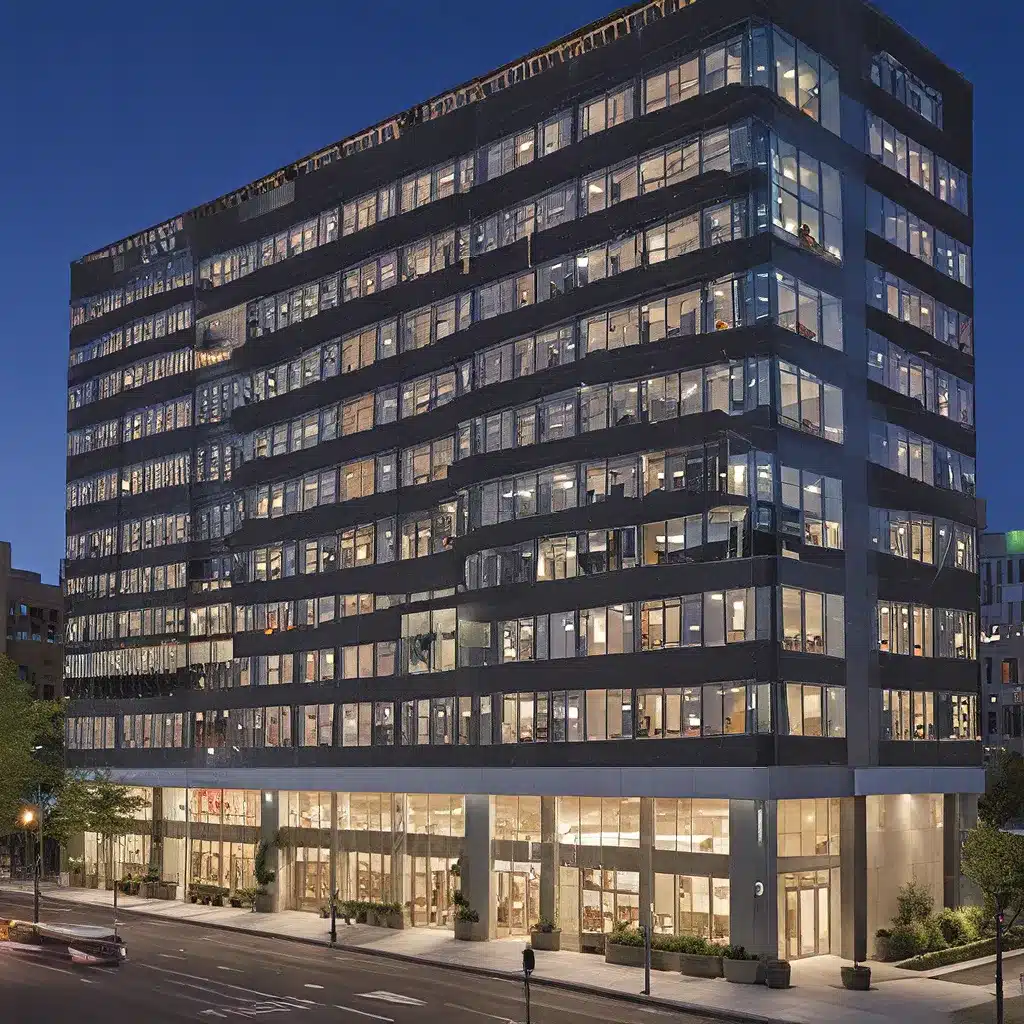
In the ever-evolving landscape of sustainable building practices, building automation technologies have emerged as a prime driver of energy efficiency. As an enthusiastic advocate for renewable energy solutions, I’m thrilled to delve into the cutting-edge advancements that are revolutionizing the way we manage our built environments.
The Rise of Intelligent Buildings
It’s no secret that buildings are a significant contributor to global energy consumption and carbon emissions. In fact, the building sector accounts for nearly 40% of worldwide energy use and 36% of direct and indirect CO2 emissions. This sobering statistic has spurred a surge of innovation, as developers, engineers, and tech entrepreneurs seek to unlock the untapped potential of our built infrastructure.
Enter the era of intelligent buildings – structures that leverage sophisticated automation and control systems to optimize energy efficiency, reduce waste, and enhance the overall occupant experience. These buildings are like high-tech hubs, brimming with a vast array of sensors, actuators, and intelligent software that work in harmony to create a seamless, responsive environment.
Integrated Building Management Systems (iBMS)
At the heart of this technological revolution are Integrated Building Management Systems (iBMS). These advanced platforms serve as the central nervous system of intelligent buildings, orchestrating a complex symphony of interconnected systems and data streams. iBMS technologies integrate functions such as HVAC, lighting, access control, fire safety, and energy management into a cohesive, user-friendly interface.
One of the key benefits of iBMS is their ability to gather and analyze real-time data from multiple building systems. By harnessing the power of Big Data and machine learning, these systems can detect patterns, identify inefficiencies, and make autonomous adjustments to optimize energy consumption. Imagine a building that can automatically adjust its heating and cooling based on occupancy levels, weather conditions, and energy prices – that’s the power of iBMS in action.
Intelligent Sensors and Actuators
Powering the iBMS are a vast array of intelligent sensors and actuators that act as the building’s sensory organs and nervous system. These cutting-edge devices are capable of monitoring a wide range of environmental factors, including temperature, humidity, air quality, occupancy levels, and energy usage.
| Sensor Type | Measurement | Application |
|---|---|---|
| Thermostats | Temperature | HVAC control, energy management |
| Hygrometers | Humidity | HVAC optimization, comfort control |
| CO2 Sensors | Air Quality | Ventilation management, indoor air quality |
| Occupancy Sensors | Presence/Vacancy | Lighting control, HVAC adjustment |
| Energy Meters | Power Consumption | Energy monitoring, demand response |
These sensors don’t just passively collect data; they also communicate with intelligent actuators that can adjust building systems in real-time. For example, a smart thermostat may detect a rise in temperature and signal the HVAC system to increase cooling, or a motion sensor may trigger the lights to turn off in an unoccupied room.
The Sustainability Imperative
As we strive to create a more sustainable future, the energy efficiency provided by building automation technologies takes on critical importance. By optimizing the performance of our buildings, we can significantly reduce their environmental impact and contribute to broader efforts to combat climate change.
According to the International Energy Agency (IEA), buildings account for 28% of global energy-related CO2 emissions. By implementing smart building automation solutions, we can achieve significant reductions in energy consumption and greenhouse gas emissions. In fact, some studies suggest that intelligent buildings can reduce energy use by up to 30% compared to conventional buildings.
But the benefits of building automation go beyond just energy savings. These technologies also improve indoor air quality, enhance occupant comfort and productivity, and support the integration of renewable energy sources like solar and wind. It’s a win-win-win scenario for the environment, building owners, and the people who inhabit these spaces.
The Future of Building Automation
As we look ahead, the future of building automation promises even more remarkable advancements. Artificial Intelligence (AI) and the Internet of Things (IoT) are poised to play an increasingly prominent role in the evolution of intelligent buildings.
Imagine a building that can anticipate your needs and preferences, adjusting lighting, temperature, and even your favorite music as you move through the space. Or a facility that can automatically detect and address maintenance issues before they become problematic, saving time and money.
McKinsey’s research suggests that the global smart building market is expected to grow at a compound annual rate of 12% over the next few years, underscoring the immense potential and investor enthusiasm in this space.
As an avid supporter of renewable energy solutions, I’m particularly excited about the integration of building automation with renewable energy systems. Imagine a building that can optimize its energy consumption by drawing power from on-site solar panels or wind turbines, while also storing excess energy in advanced battery systems for use during peak demand periods.
The Firewinder Advantage
At Firewinder, we’re at the forefront of this building automation revolution. Our team of engineers, data scientists, and sustainability experts have developed cutting-edge solutions that leverage the power of iBMS, intelligent sensors, and AI to transform the way buildings operate.
Whether you’re a commercial property owner, a facility manager, or a sustainability-minded individual, we’re here to guide you through the process of implementing the latest building automation technologies. Our personalized consulting services and turnkey installation can help you unlock the full potential of your built environment, ensuring that your building becomes a shining example of energy efficiency and sustainability.
So, let’s embark on this journey together and discover how building automation can revolutionize the way we design, construct, and manage our built infrastructure. The future of sustainable buildings is here, and it’s waiting for you to embrace it.

